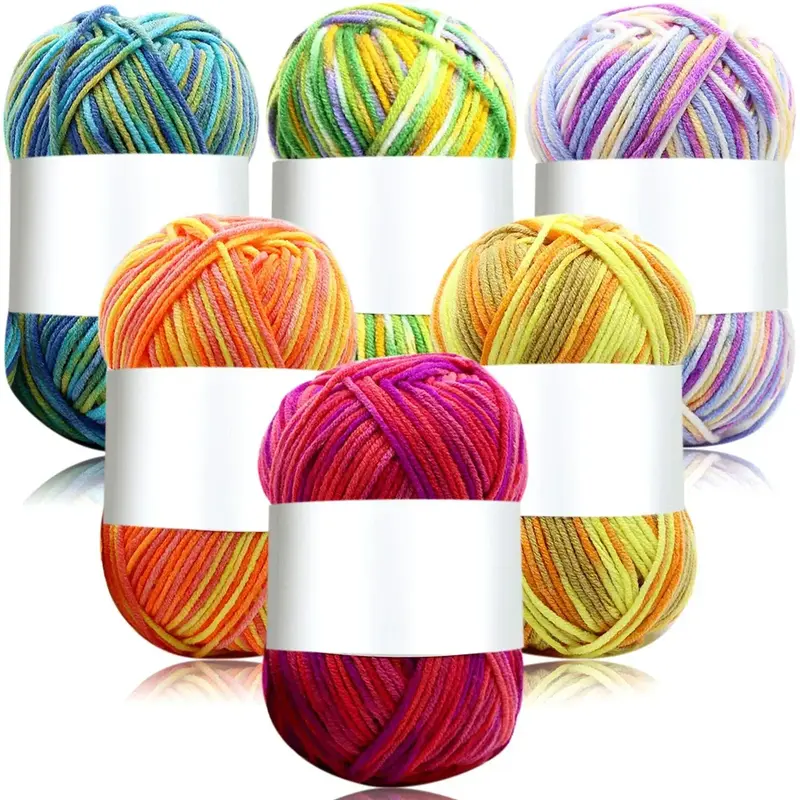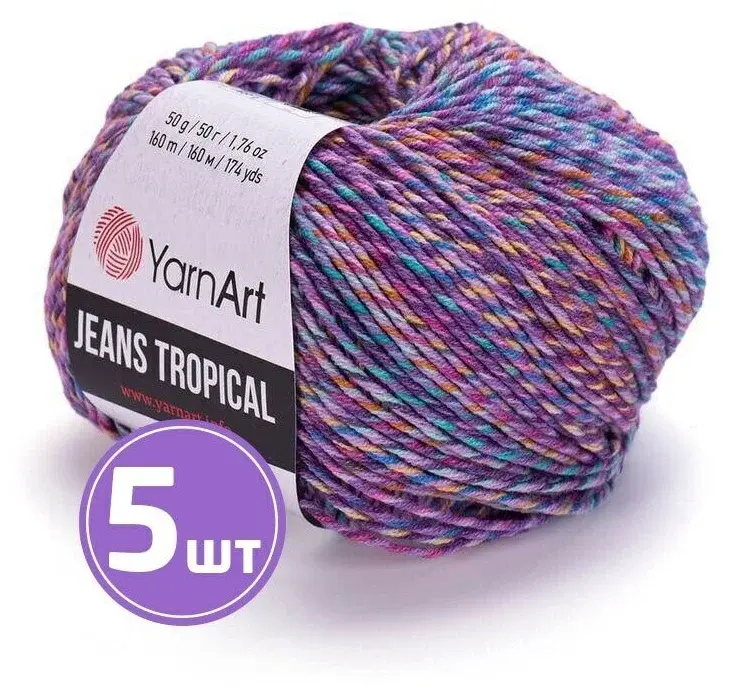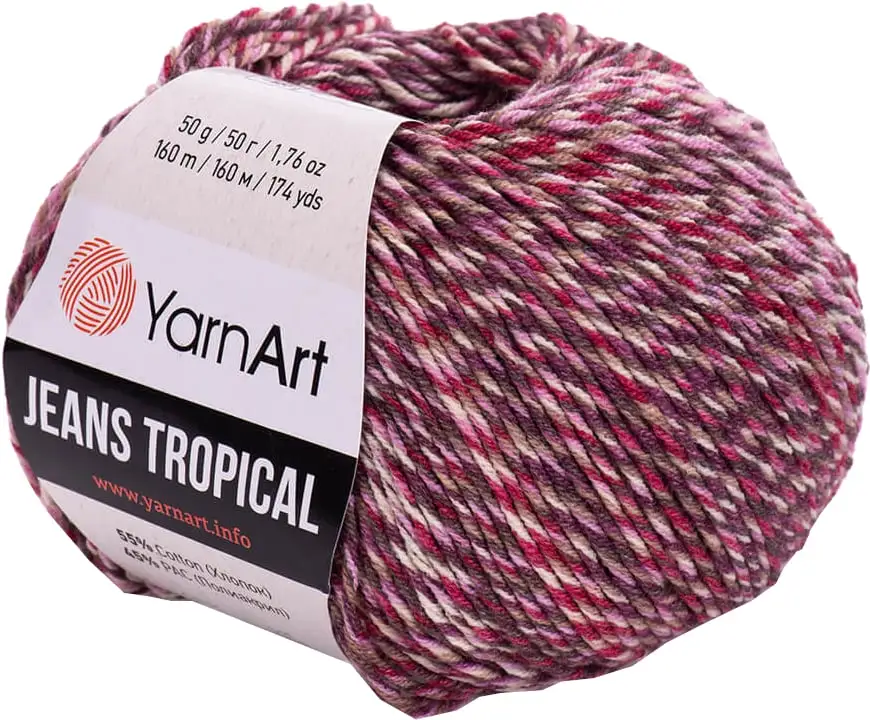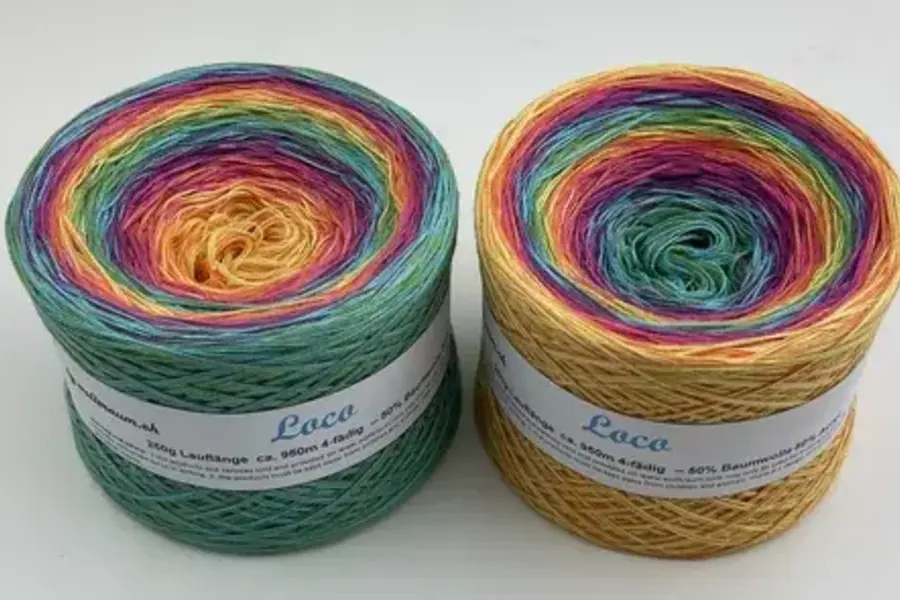This stuff is a game-changer. Whether you’re knitting a hat, crocheting a scarf, or working on something you’re not quite sure about yet—using multicolor sport yarn adds a pop of life without needing to juggle different balls of yarn.
In fact, it brings that wow factor to your work without adding extra hassle. You get all the colors and variations you want, but it’s still as easy to work with as regular yarn.
Why Choose Multicolor Sport Yarn?
Sport yarn is already a go-to for many crafters because of its versatility.
It’s thinner than worsted-weight yarn, making it perfect for those lightweight projects like baby blankets, light sweaters, or socks. You can still get structure without the bulk, and it’s ideal for more detailed patterns.
Now, imagine adding color. And not just any color. We’re talking about multiple colors blending into one another, creating dynamic, gradient-like transitions, or just wild pops of color. That’s what you get with multicolor sport yarn.
Here’s why it’s perfect for your next project:
- No Color Changes: No need to change skeins for different colors. The yarn does the work for you.
- Texture Variety: Depending on how the yarn is dyed, you can get a speckled effect, a striped look, or even some funky combinations that are totally unique.
- Lightweight, But Strong: Sport yarn gives you all the flexibility of lightweight yarn but holds up in terms of durability.
How to Use Multicolor Sport Yarn in Your Projects

It’s not just about grabbing a skein and going to town, though. You want to use this yarn wisely to get the most out of the color changes.
Here are a few tips:
- Let the Yarn Shine: Sometimes less is more. If your yarn has a lot going on with colors, you can stick to simple stitches—like garter stitch or single crochet. The color changes will make the piece pop without needing complex patterns.
- Mix It Up: Don’t be afraid to combine multicolor sport yarn with solid colors. If you’re working on a sweater, use the multicolor for the body and keep the cuffs and collar in a solid complementary color.
- Pay Attention to the Color Flow: Multicolor yarns vary—some have slow, smooth transitions, while others jump from one color to another quickly. Know what kind of effect you’re going for before starting a project.
Best Projects for Multicolor Sport Yarn
So, what can you actually make with this magic yarn? Glad you asked. Here are some ideas:
- Socks: Lightweight and fun. The colors can make the simplest sock pattern look like you spent hours planning.
- Shawls: A great canvas for showing off those color transitions.
- Baby Clothes: Multicolor sport yarn is soft and thin enough for little outfits, but the colors make it stand out as something special.
- Hats and Mittens: These small projects are perfect for experimenting with multicolor sport yarn because the color variations create interest without needing to work too hard.
How to Choose the Right Multicolor Sport Yarn for Your Project
Now that you know what you can do with multicolor sport yarn, let’s talk about how to pick the right one. Not all multicolor yarns are created equal. The fiber, color patterns, and texture all play a role in how your project will turn out.
Here’s a breakdown of what to look for:
1. Fiber Content Matters
The fiber content of your yarn is key. Here are the most common fibers you’ll find in multicolor sport yarn:
- Wool: Great for warmth, elasticity, and durability. Perfect for winter wear like hats and scarves.
- Cotton: Soft and breathable, ideal for summer garments or baby clothes.
- Acrylic: Budget-friendly, durable, and available in every color under the sun. It’s easy to care for, making it a solid choice for everyday projects.
- Blends: These often combine the best of different fibers, like wool for warmth and acrylic for easy care.
Each fiber will affect how the colors appear and behave in your project. For example, wool might absorb dye differently than acrylic, creating more subtle color transitions.
2. Color Patterns
There are several types of multicolor yarns, and each gives a different effect:
- Self-striping: The yarn transitions between long stretches of color, giving you large, clean blocks of different hues.
- Variegated: The colors change more frequently, which can create a speckled or marbled look.
- Gradient: The yarn moves slowly from one color to another, giving a smooth, Ombre effect.
Think about what you want the final product to look like. If you want big, bold stripes, go for self-striping yarn. If you’re aiming for something more subtle, gradient might be your best bet.
3. Yarn Weight
Even though we’re talking about sport yarn, make sure you’re choosing the right weight for your project. Some multicolor sport yarns may be a little thinner or thicker depending on the fiber and the brand. Always check the gauge recommendations on the label.
Multicolor Sport Yarn: Tips for Beginners

https://www.theknittingnetwork.co.uk/multi-coloured-yarn If you’re new to crafting or just new to working with multicolor sport yarn, there are a few things you should keep in mind to avoid headaches later on.
Here’s what I’ve learned from experience (and a few mistakes along the way):
Start with Small Projects
It can be tempting to jump into a big project, but multicolor yarn behaves differently from solids. The color changes might not look how you expect when you’ve got a big blanket or sweater on the needles.
Start with something small—like a hat, a pair of socks, or a baby blanket. You’ll get a feel for how the colors interact without committing too much time or yarn.
Swatch, Swatch, Swatch
I know, switching can feel like a waste of time. But when you’re working with multicolor sport yarn, it’s essential. You need to see how the colors play out in your chosen stitch pattern.
Sometimes the yarn looks different in the skein than it does when worked up. Switching helps you avoid surprises.
Simplify Your Stitch Patterns
This one’s huge. Multicolor yarn can overwhelm intricate stitch patterns. If you’re using yarn with bold, frequent color changes, stick to simpler patterns like stockinette, garter stitch, or basic crochet stitches.
Let the yarn do the talking.
Match Yarn to the Right Project
Not every project is ideal for multicolor sport yarn. While it’s fun, it doesn’t always suit detailed, complex pieces. Think about using it for projects where color is the star—like scarves, shawls, and baby items.
For intricate cables or lace, stick to solids or semi-solids to let the pattern shine.
Creative Ways to Use Multicolor Sport Yarn

Creative Ways to Use Multicolor Sport Yarn Let’s be real—working with multicolor sport yarn is exciting because of the endless creative possibilities. The beauty of this yarn lies in how different it looks depending on the project. Whether you want to go bold or subtle, there’s always something fresh you can try.
Here are a few fun, creative ways to work with it:
1. Accent Pieces
Use multicolor yarn for borders, trims, or cuffs. Imagine a solid-colored sweater with multicolor cuffs or a plain hat with a fun, colorful pom-pom on top. It’s an easy way to add flair without overwhelming the design.
2. Double Stranding
Double-stranding is when you hold two strands of yarn together while knitting or crocheting. You can use one strand of multicolor sport yarn and one strand of solid-colored yarn. This adds a whole new level of depth to your fabric.
3. Striping
Yes, multicolor yarn gives you stripes automatically, but you can take it a step further. Alternate rows or sections of multicolor yarn with rows of a solid color to create intentional stripes. This gives you control over the color balance while still keeping things interesting.
Pros and Cons of Multicolor Sport Yarn
Like anything, multicolor sport yarn has its ups and downs. Let’s be real here—there are times when it works like a dream, and others where it might not be your best option.
Pros:
- Instant Color Variety: One skein gives you multiple colors, no need to switch yarns.
- Fun to Work With: Watching the colors unfold as you knit or crochet is like a little surprise with every row.
- Perfect for Simple Projects: Multicolor sport yarn can take a basic pattern and make it something special.
Cons:
- Color Pooling: This happens when the colors stack up in one area instead of spreading evenly throughout the fabric. It can mess with the look of your project.
- Hard to Match Dye Lots: If you run out of yarn mid-project, it can be tricky to match the colors exactly with a new skein, especially if the yarn is hand-dyed.
- Can Overwhelm Patterns: Complex stitch patterns can get lost in the color variations. Keep it simple to let the yarn shine.
FAQs
What’s the difference between sport yarn and worsted yarn?
Sport yarn is thinner than worsted yarn. Think of it as a light or medium-weight yarn that’s ideal for projects where you want some structure but not a lot of bulk.
Does multicolor sport yarn require special care?
Not really. Most sport yarns are made of fibers like wool, cotton, or acrylic. The care depends on the fiber content, but you can usually machine wash and dry it. Just make sure to check the label!
How do I stop color pooling with multicolor yarn?
Color pooling happens when the colors in the yarn stack up on each other, creating blotches. To avoid this, you can try switching up your stitches or alternating between two skeins of yarn every few rows.
How do I avoid color pooling in multicolor sport yarn?
Color pooling can be avoided by using different stitch patterns or alternating skeins every few rows. This keeps the colors from stacking up in one spot.
Can I mix multicolor sport yarn with solid yarn in one project?
Absolutely! In fact, combining multicolor yarn with solid-colored yarn can create stunning effects. Use the solid yarn for areas where you want more control over the color.
Is multicolor sport yarn good for beginners?
Yes! Multicolor sport yarn is great for beginners because it makes simple projects look impressive. Stick with basic stitch patterns, and let the yarn do the work.
Final Thoughts on Multicolor Sport Yarn
Multicolor sport yarn opens up a world of creative possibilities. Whether you’re making a simple scarf or an intricate shawl, the color changes add depth and personality to your projects.
It’s a versatile option that lets you play with color without needing to juggle multiple balls of yarn. Just be mindful of color pooling, pick the right project, and keep your stitch patterns simple to really let the yarn shine.

